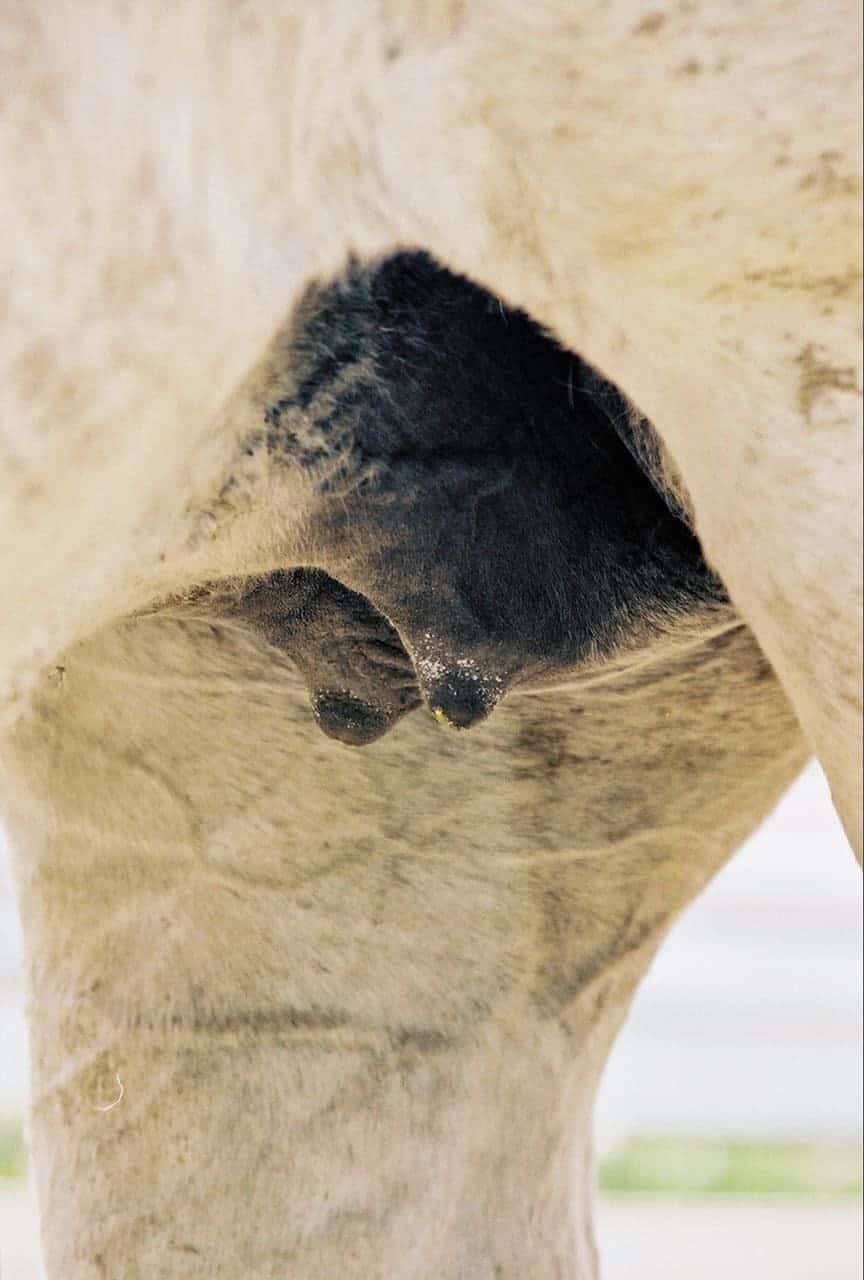Preparing Mares for Foaling

Average gestational length is around 11 months and a week, or 335 to 342 days. However, sometimes the duration is shorter or longer (330 to 360 days or more) with no detrimental effects on the fetus or mare.
Remove mares from endophyte-contaminated tall fescue pastures no later than 10 months of gestation to prevent abnormal prolonged pregnancy, decreased milk production, and even abortion, and work with your veterinarian to determine whether a mare needs to be medicated with a prolactin stimulation product to negate the endophyte’s effects.
Lack of udder development four to six weeks before foaling in a mare that is not grazing tall fescue or is not on pergolide medication for equine Cushing’s disease should not be a cause for alarm. Normal udder development starts in the month prior to delivery. Typically, the udder becomes engorged within the last few days before foaling (parturition). Waxy accumulation at the nipples from early colostrum (the mare’s antibody-rich first milk) production occurs one to four days before foaling but sometimes earlier. Occasionally, milk leaks from teats for several days to weeks before foaling, resulting in colostrum loss. If this occurs, work with your veterinarian to find an alternative source of colostrum for the neonate before foaling TheHorse.com is home to thousands of free articles about horse health care. In order to access some of our exclusive free content, you must be signed into TheHorse.com. Already have an account?Create a free account with TheHorse.com to view this content.
Start your free account today!
and continue reading.
Written by:
Juan Samper, DVM, MSc, PhD, Dipl. ACT
Related Articles
Stay on top of the most recent Horse Health news with











